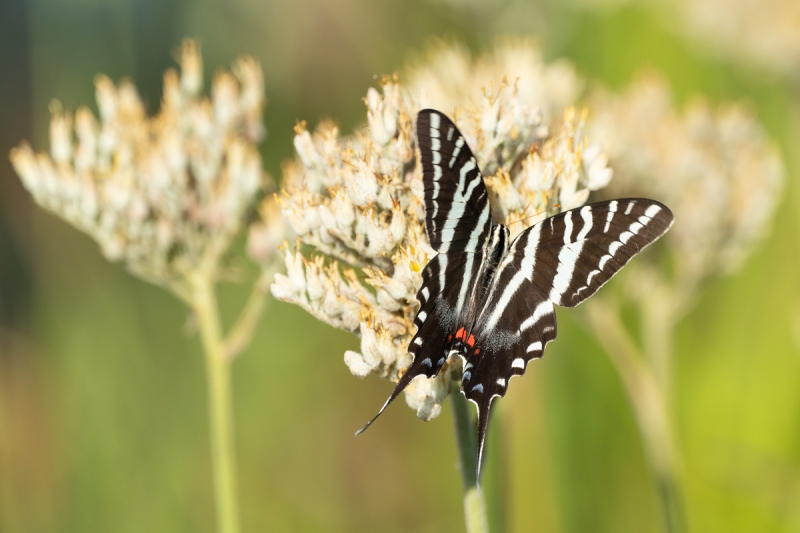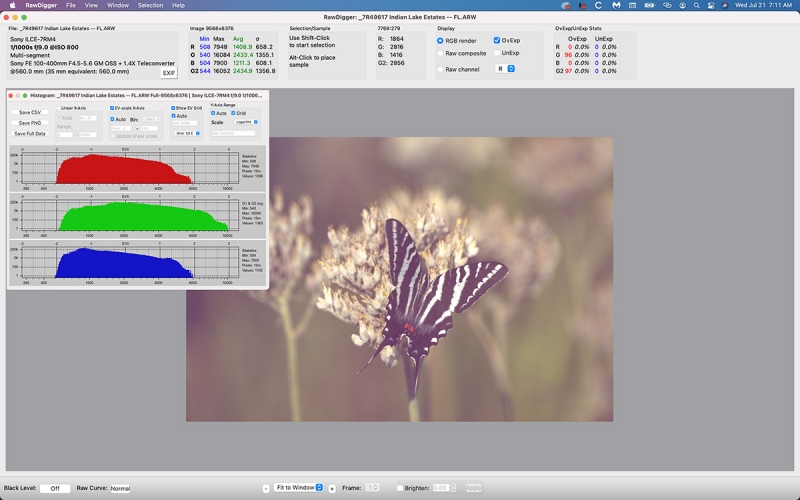What’s Up?
Most of the time, I know a day or two in advance what the subject of an upcoming blog will be. I woke this morning with no clue. So I decided to look at my ILE July 2020 file. I was surprised to see flowers, flowers, and more flowers. Along with a very few butterflies and cranes. Right now the fields are too soft and too wet to drive on safely, so no cranes. And there are just not many flowers around.
Anyhoo, I found today’s featured image, processed it, and prepared this blog post. Today is Wednesday 21 July. Wherever you are, and whatever you are doing, I hope that you too have a great day.
Thanks for all the comments on yesterday’s images. I will be sharing my thoughts on those with you here tomorrow.
Remember that you can find some great photo accessories (and necessities!) on Amazon by clicking on the Stuff tab on the orange/yellow menu bar above. On a related note, it would be extremely helpful if blog-folks like me, who spend too much money on Amazon, would get in the habit of clicking on the Amazon logo link on the right side of each blog post. As you might expect, doing so will not cost you a single penny, but would be appreciated tremendously by yours truly. And it works seamlessly with your Amazon Prime account.
This blog post took about one hour to prepare and makes 206 consecutive days with a new one. Please remember that if an item — a Delkin flash card, or a tripod head — for example, that is available from B&H and/or Bedfords, and is also available in the BAA Online Store, it would be great, and greatly appreciated if you would opt to purchase from us. We will match any price. Please remember also to use my B&H affiliate links or to save 3% at Bedfords by using the BIRDSASART discount code at checkout. Doing either often earns you free guides and/or discounts. And doing so always earns my great appreciation.
Please Remember
With income from IPTs now close to zero, please, if you enjoy and learn from the blog, remember to use one of my two affiliate programs when purchasing new gear. Doing so just might make it possible for me to avoid having to try to get a job as a Walmart greeter and will not cost you a single penny more. And if you use Bedfords and remember to enter the BIRDSASART code at checkout, you will save 3% on every order and enjoy free second-day air shipping. In these crazy times — I am out at least forty to sixty thousand dollars so far due to COVID 19 (with lots more to come) — remembering to use my B&H link or to shop at Bedfords will help me out a ton and be greatly appreciated. Overseas folks who cannot order from the US because of import fees, duties, and taxes, are invited to help out by clicking here to leave a blog thank you gift if they see fit.
New and Better Bedfords Discount Policy!
You can now save 3% on all of your Bedfords photo gear purchases by entering the BIRDSASART coupon code at checkout. Your discount will be applied to your pre-tax total. In addition, by using the code you will get 2nd day air shipping via Fed Ex.
Grab a Nikon AF-S Teleconverter TC-14E III and save $14.99. Purchase a Canon EOS R5 and your discount will be $116.97. Purchase a Sony FE 600mm f/4 GM OSS lens and save a remarkable $389.94! Your Bedford’s purchase no longer needs to be greater than $1,000.00 for you to receive a discount. The more you spend, the more you save.
Money Saving Reminder
Many have learned that if you need a hot photo item that is out of stock at B&H and would enjoy free second-day air shipping, your best bet is to click here, place an order with Bedfords, and enter the coupon code BIRDSASART at checkout. If an item is out of stock, contact Steve Elkins via e-mail or on his cell phone at (479) 381-2592 (Central time). Be sure to mention the BIRDSASART coupon code and use it for your online order to save 3% and enjoy free 2nd-day air shipping. Steve has been great at getting folks the hot items that are out of stock at B&H and everywhere else. The wait lists at the big stores can be a year or longer for the hard to get items. Steve will surely get you your gear long before that. For the past year, he has been helping BAA Blog folks get their hands on items like the SONY a9 ii, the SONY 200-600 G OSS lens, the Canon EOS R5, the Canon RF 100-500mm lens, and the Nikon 500mm PF. Steve is personable, helpful, and eager to please.


Gear Questions and Advice
Too many folks attending BAA IPTs (remember those?) and dozens of photographers whom I see in the field and on BPN, are–out of ignorance–using the wrong gear, especially when it comes to tripods and more especially, tripod heads… Please know that I am always glad to answer your gear questions via e-mail
|
|
|
This image was created on 15 July 2020 a few blocks from my home at ILE. I used the hand held Sony FE 100-400mm f/4.5-5.6 GM OSS lens with the Sony FE 1.4x Teleconverter (at 560mm) and the 61-MP Sony Alpha a7R IV Mirrorless Digital Camera Body. ISO 800. The exposure was determined by Zebras with ISO on the rear wheel: 1/1000 sec. at f/9 (wide open) in Manual mode. RawDigger showed this exposure to be dead-solid perfect (as seen in the screen capture below). AWB at 8:44am on a clear, sunny morning. I screwed up the focus (by choosing the wrong AF Method) … Click on the image to view a larger version. Image #1: Zebra Swallowtail on Carolina Red Root blossom |
Your Thoughts?
Zebra Swallowtail is my favorite butterfly. This is a beautiful specimen. They are uncommon and skittish so getting a great image is a huge challenge.
Enlarge the image and examine it critically and ask yourself, what do I like about it? Then ask yourself, what don’t I like about it. Then share your thoughts by leaving a comment. Where do you think the focus was? What one thing could the butterfly have done that would have resulted in a perfect image?
|
|
Image #1A: RawDigger screen capture for the Zebra Swallowtail on Carolina Red Root blossom image |
Dead-Solid Perfect!
Images where the G channel gets 2/3rds of the way from the 8000 to the 16000 line are perfect exposures. Images where the G channel gets right up to the line are dead-solid perfect. With 195 OvExp pixels out of 51,000,000 this is a dead-solid perfect exposure.
RawDigger — not for the faint of heart …
Nothing has ever helped me learn to create perfect exposures to the degree that RawDigger has. I think that many folks are reluctant to learn that most of their images are underexposed by one or more full stops and that highlight warnings in Photoshop, Lightroom, Capture One, and your in-camera histogram are completely bogus as they are based on the embedded JPEGs. Only your raw files tell the truth all the time. Heck, I resisted RawDigger for several years … Once you get over that feeling, RawDigger can become your very best exposure friend no matter what system you are using. On the recent IPTs and In-the-Field sessions, we have demonstrated that fact. Convincingly.
The RawDigger (pink) Adapted Histogram
In the RawDigger e-Guide, you will learn exactly how to set up the Adapted “pink” RawDigger Histogram and how to use it to quickly and easily evaluate the exposure or raw file brightness of images from all digital cameras currently in use. RawDigger was especially helpful to me when I struggled with R5 exposures and when learned my new camera body, the Sony Alpha a1.
|
|
RawDigger e-Guide with Two Videos |
The RawDigger e-Guide with Two Videos
by Arthur Morris with Patrick Sparkman
The RawDigger e-Guide was created only for serious photographers who wish to get the absolute most out of their raw files.
Patrick and I began work on the guide in July 2020. At first we struggled. We asked questions. We learned about Max-G values. We could not figure out why the Max G values varied by camera system. IPT veteran Bart Deamer asked lots of questions that we could not answer. We got help from RawDigger creator Iliah Borg. We learned. In December, Patrick came up with an Adapted Histogram that allows us to evaluate the exposures and raw file brightness for all images created with all digital camera bodies from the last two decades. What we learned each time prompted three complete beginning to end re-writes.
The point of the guide is to teach you to truly expose to the mega-Expose-to-the-Right so that you will minimize noise, maximize image quality, best utilize your camera’s dynamic range, and attain the highest possible level of shadow detail in your RAW files in every situation. In addition, your properly exposed RAW files will contain more tonal information and feature the smoothest possible transitions between tones. And your optimized images will feature rich, accurate color.
We teach you why the GREEN channel is almost always the first to over-expose. We save you money by advising you which version of RawDigger you need. We teach you how to interpret the Max G values for your Canon, Nikon, and SONY camera bodies. It is very likely that the Shock-your-World section will shock you. And lastly — thanks to the technical and practical brilliance of Patrick Sparkman — we teach you a simple way to quickly and easily evaluate your exposures and raw file brightness using an Adapted RawDigger histogram.
The flower video takes you through a session where artie edits a folder of images in Capture One while checking the exposures and Max-G values in RawDigger. The Adapted Histogram video examines a series of recent images with the pink histograms and covers lots of fine points including and especially how to deal with specular highlights. The directions for setting up the Adapted Histogram are in the text.
If we priced this guide based on how much effort we put into it, it would sell it for $999.00. But as this guide will be purchased only by a limited number of serious photographers, we have priced it at $51.00. You can order yours here in the BAA Online Store.
Typos
With all blog posts, feel free to e-mail or to leave a comment regarding any typos or errors.


















My guess is the af mode was not a spot mode but some wide Sony af mode that got the wing tips as they were the closest points. Hard to have everything right all the time especially when you might have also anticipated getting the butterfly in flight and then had the af mode set for capturing a wider af area for a moving object????? But fantastic image anyway you cut it….Bp
Nice image. I want to comment on what you titled Raw Digger is not for the faint of heart. I have owned Raw Digger for a couple of months and still trying to wrap my arms around all the information in the guide. It takes looking at your histogram and exposure in a totally new light. I still don’t understand everything but the guide is a huge help when using the software. I am still learning to view my exposures in a different context. When I get it right it takes a lot less processing. I recommend the software but not without purchasing the guide to reduce the learning curve.
A nice Zebra Swallowtail image, Art! Looks to me like your focus point was around the middle of it’s right wing.
Catching this butterfly with it’s wings fully opened would most likely have given you the details you were looking for… That can be hard at times with some species, they seem to constantly flap their wings. Firing off a burst of images will often times give at least one frame with fully open wings. The out of focus plants in the background also detract a bit, a cleaner background would improve this as well. Of course it’s all easier said than done!!
I like the image. It appears that your AF setting caused the camera to grab what it thought was an “eye” (the red spot). It would have been nice if the wings were more open and/or you had more depth of field with a lower f-stop and higher ISO. I had some success with a similar setup (A1 w/ 200-600 and 1.4) a week ago while leading a butterfly walk (https://photos.app.goo.gl/y5nL21QNjZdcWABKA).
It’s a great shot. I wish the stem on the left wasn’t there but it was, so you had to keep it. The focus appears to be on the red spot and up the center of the right wing. Had he moved his left wing away from you, AND exposed his left antennae into view it might have been a better photo. But, alas, he didn’t know you were there 🙂
There are several things I like about the image including the composition with the butterfly canted to the right and the slight bend of the flowers to the left. As you observed, it’s an interesting specimen and one we don’t see around here. Obviously, you have little control over the background and flower so I won’t venture to comment on these issues. What would I have preferred to have seen? Both wings (L>R) are a bit oof (DOF v. motion?) and the head position is not optimal. Only one antenna is visible and the head is ever slightly shrouded by the wing. Also, the focus appears to be on the spots on the lower part of the wings so the head is not the focal point. The right tail flare (?) is lost in the shadow of the stem on the plant (from the butterfly?) Perhaps had you moved to the right a bit, all of these issues would have been obviated though with butterflies, they rarely pause but for a brief second.